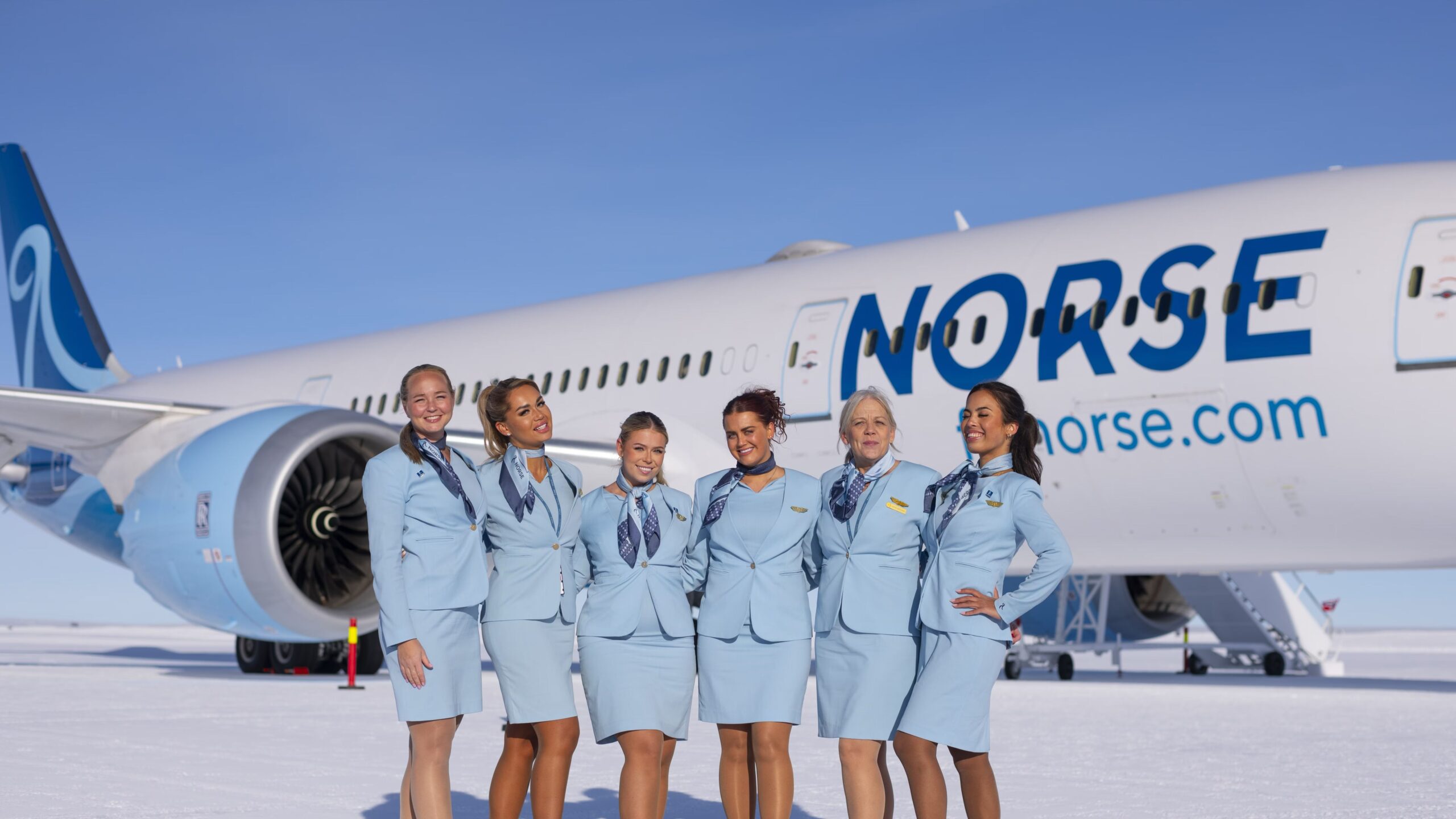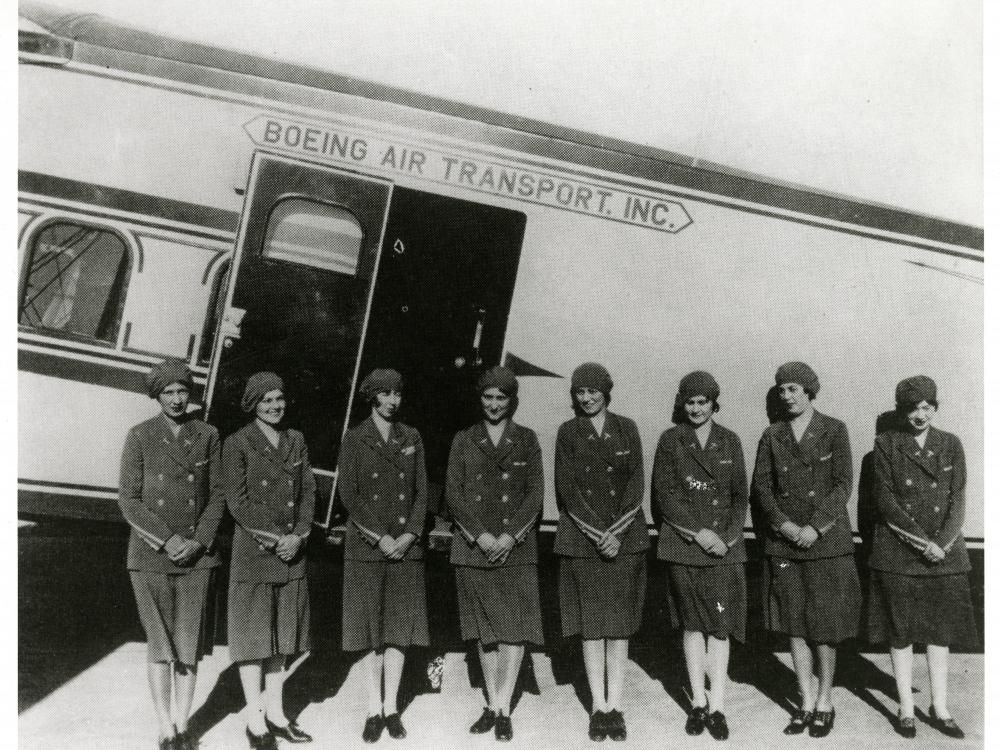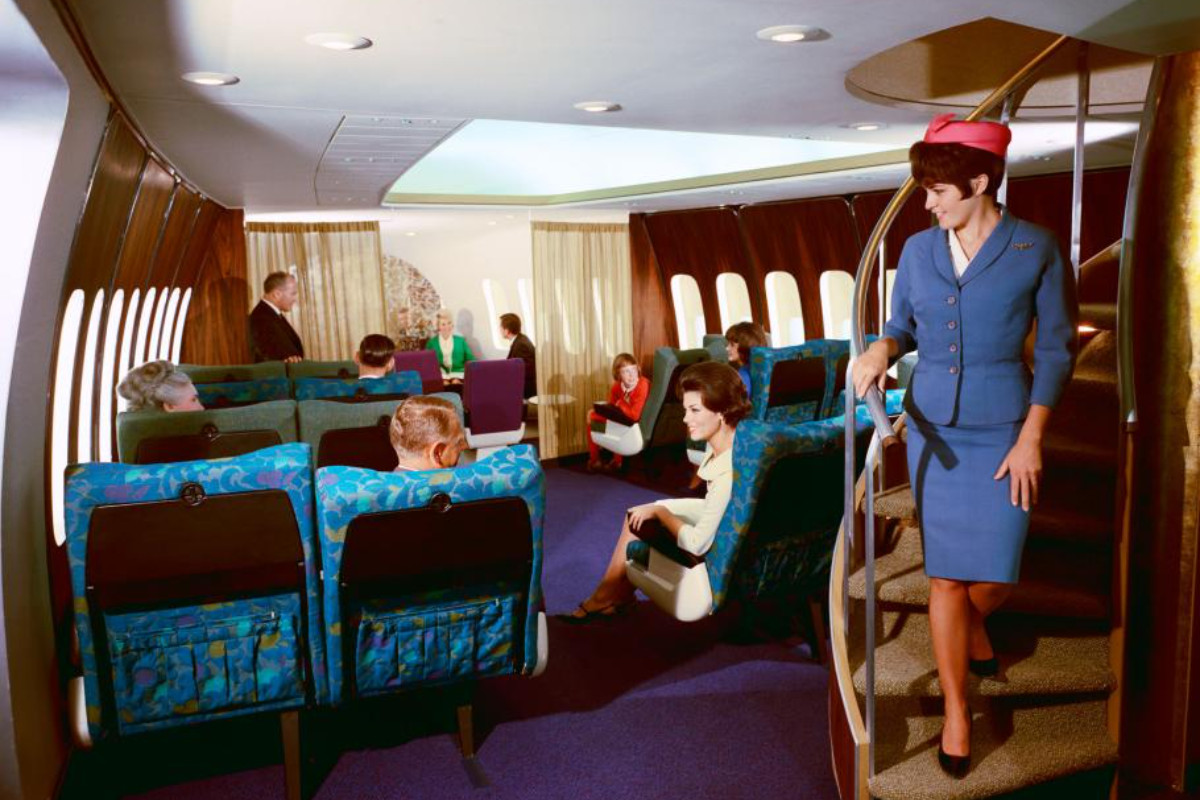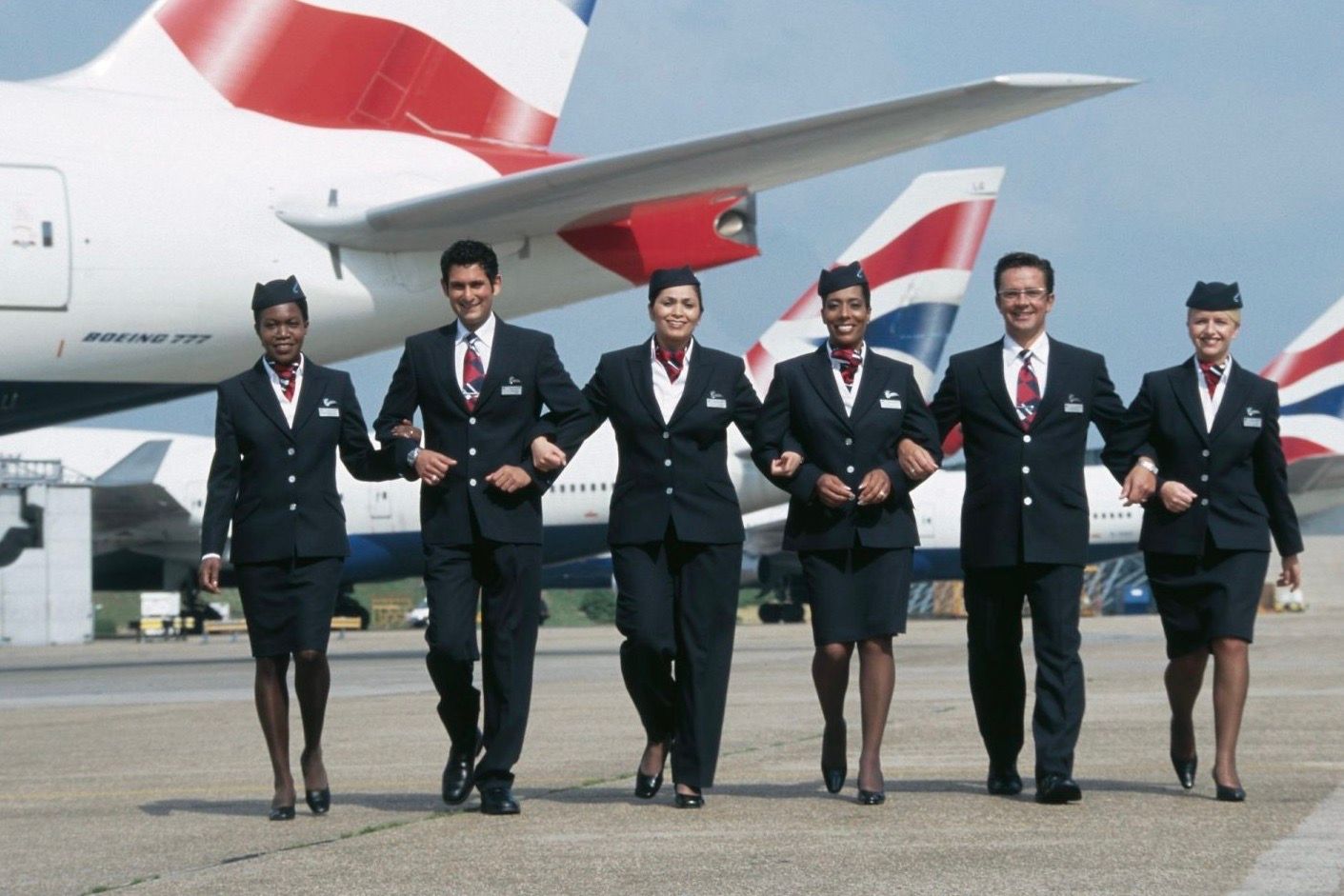Flight attendant
uniforms have changed significantly over the years (as opposed to
pilots’ navy-derived uniforms, which have barely changed since the 1930s
). Flight attendant uniforms change with fashion and vary with values, social expectations, local traditional clothes, and more. While many male flight attendants have filled the role for decades, this article will focus on the female flight attendant uniforms
(which tend to be more fashionable and expressive). Airlines have always emphasized their dress codes.
Delta has recently emphasized that its strict adherence to dress code begins with hiring
.
Pre-war and war
The role of the first stewardesses was to be inflight nurses (they also had to be qualified nurses), so it should come as little surprise that the first (
including Ellen Church
) were dressed as such. In the 1930s and 1940s, the dresses reflected the conservative mentality of the period. During World War II, military-style uniforms were popular.
Photo: National Air and Space Museum
Post-war jet age
In the 1950s and 1960s, the role of flight attendant (stewardess) was seen as a woman’s role. In 1950, uniforms were influenced by the military and nurse styles of the time and were typically cinched at the waist and paired with a traditional hat. In the 1950s, uniforms remained often ultra-conservative.
Some 1960s uniforms went futuristic (with all the cheesiness of how 1960s futuristic Sci-Fi movies have aged today). Some 1960s uniforms brought in Space Age designs. This was a time when the job was that of a stewardess – the gender-neutral and more professional role of a flight attendant was still years off.
|
Key moments & periods: |
|
|---|---|
|
1930: |
Ellen Church becomes first stewardess |
|
1930s: |
Stewardess were qualified nurses |
|
1950s: |
Uniforms conservative and professional |
|
1960s-1970s: |
Explosion of color, above-the-knee dresses, and often revealing uniforms |
|
1980s-1990s: |
Return to conservative, professional dress |
|
2000s-present: |
Continuation of professional uniforms |
“Whereas in 1958, airhostess started to model a tea-length set, alongside hats and white gloves. Many people deemed air hostesses as ‘the Supermodels of that era’, and with ‘the chic uniform, white gloves and pillbox hat’. By the end of the 1960s, the hemlines of air hostess uniforms began to go up, introducing a much more glamorous look when it came to international air travel.” – Jermyn Street Design
During the 1960s and 1980s, women’s liberation movements started to greatly impact the sector. In 1967, American Airlines introduced a tri-color uniform “created with a feminine silhouette in mind and appeared more comfortable than previous iterations.” Southwest Airlines incorporated go-go boots and belted mini skirts into their uniforms. During the 1960s, it was typical requirements for women included that they had to be in their 20s, single with no children, between 5’ and 5’9”, and less than 135 lbs.
The first female flight attendant trousers appeared in the 1970s. The early 1970s brought bright colors, psychedelic patterns, short skirts, and go-go boots, with Pan Am
introducing its first above-the-knee hemline in 1970.
1980-1990s
But the flamboyance of the 1960s and 1970s wasn’t to last. In the 1980s, uniforms arguably went conservative again (although in a different way than the 1950s) and have stayed that way today.
Photo: National Air and Space Museum Archives, Smithsonian Institution
As the 1940 Air Terminal Museum puts it, “The flight attendant image shifted from Playboy Bunny to safety professional, and uniforms became androgynous pantsuits and blouses. The glamor of air travel was gone as flight attendants had to provide quicker service to an increasing number of passengers.”
As utilitarian uniforms returned to the status quo in the 1980s, airlines have adapted to a professional business style. Studio 104 notes of this period, “whilst small heels were still in fashion, hot pants certainly were not… dark tones became more popular, such as navy blue, which is conservative and professional.“
Flight attendant uniforms today
As the values of countries like the US and UK have changed, so have the flight attendants’ uniforms, age, and gender (with more males filling the role). Airlines generally focus on making their flight attendant uniforms more practical while also being professional and avoiding accusations of objectifying the flight attendants.
Photo: British Airways
However, this is not necessarily universal, and some international airlines may continue to impose uniforms and expectations somewhat more akin to those of the past. For example, many airlines expect their female flight attendants to apply their makeup rigorously. While some airlines may not openly advertise it, there is often a maximum age limit for flight attendants (typically early to mid-thirties).
Example Delta Air Lines dress codes:
- Naturally colored hair
- Long hair to be secured above the shoulders
- No dramatic eyelash extensions
- Nails to be simple (no neon colors etc.)
- Tattoos must be covered
- Limit to one nose piercing
- No other visible piercing permitted (appear from max two earrings)
- Skirts/dresses must be at or below the knee
Some airlines choose to have almost business-suit uniforms for flight attendants, while others (such as Royal Brunei Airlines) draw from local religion-influenced traditional dress. In some countries, flight attendants are seen as ambassadors of their respective countries. Some have very different flight attendant uniforms for male and female flight attendants.



